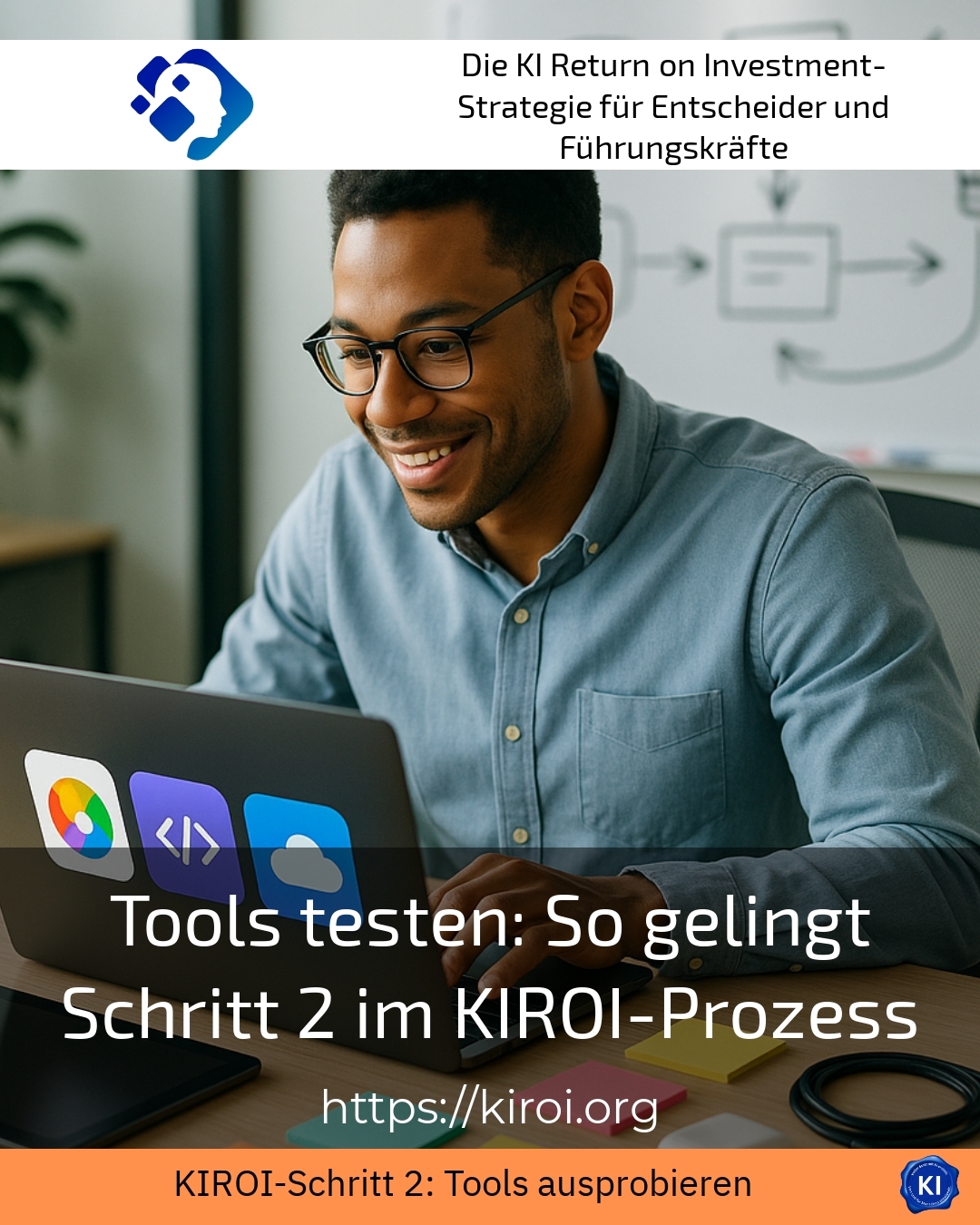Structured tool testing is a central component in the second step of the KIROI process. Decision-makers are faced with the challenge of selecting from a wide range of software and digital solutions those that really fulfil their individual requirements. A carefully planned and executed test offers the opportunity to try out the right tools in practice and thus make reliable decisions. Testing tools helps to check their effectiveness and compatibility in day-to-day work and to utilise their long-term potential.
Testing tools as a structured process in the KIROI model
Testing tools in the KIROI process is not just about trying out software, but about a systematic approach. First, companies analyse their specific requirements and define clear use cases. This is the only way to select potential tools in a targeted manner and then test them realistically.
Important criteria for the selection are
- Technical functions that support the work process
- User-friendliness so that users can quickly become productive
- Compatibility with existing systems to avoid friction losses
- Adaptability to individual company processes
Only testing in real or simulated environments shows how well a tool can actually be integrated into daily work. Teams also learn through this practice how they can optimise and adapt the tool.
Practical examples from various industries
In the technical services sector, an SEO tool for analysing the competition proved its worth. The company was able to identify gaps in keyword coverage through targeted testing tools and thus improve its digital strategy. This approach supported sustainable growth and increased visibility on the web.
In the manufacturing industry, the focus is often on evaluating early warning systems. Here, the testing tool helps to select solutions that enable faults to be recognised at an early stage. This makes production processes more stable and reduces downtimes.
Office organisation also benefits from systematic testing. Programs for automating routine tasks save time and minimise errors. The decisive factor here is that the tools can be easily integrated into existing Office applications and offer a high level of data security.
BEST PRACTICE with a customer (name hidden due to NDA contract): A new CRM system was tested in a medium-sized company. During the test phase, it became clear that flexible customisation options for workflows are crucial for acceptance within the team. Regular training sessions and feedback rounds during the test ensured a smooth implementation.
Tips for successful tool testing in the KIROI process
To ensure that the second step in the KIROI process is successful, companies should follow a few tried-and-tested procedures:
- Define specific test objectives to make effectiveness measurable.
- Involve future users at an early stage. This will give you valuable feedback on user-friendliness.
- Use test environments that simulate realistic conditions.
- Allow sufficient time for iterative test cycles to enable optimisations.
- Document all findings carefully in order to make informed decisions.
Companies that take these tips into account often find that their investment in digital tools is better utilised - because the solutions fit exactly and are well received.
Challenges when testing tools and how to overcome them
A common stumbling block is that technical functions are prioritised for testing without involving the actual users. This often leads to tools that may be powerful, but are rarely used in everyday life. This is why user feedback is an equally important criterion.
It can also happen that companies decide in favour of a solution too quickly without carrying out sufficient test cycles. Continuous testing and customisation helps to avoid wrong decisions and enable sustainable integration.
Last but not least, the integration of new tools into existing systems is often complex - it is advisable to check interfaces and compatibilities carefully in advance to avoid disappointment.
My analysis
Testing tools in the second step of the KIROI process is key to selecting suitable tools and implementing them successfully. A structured approach with clear objectives, realistic testing and continuous feedback increases the chances of achieving sustainable benefits. Practical examples show that companies can gain valuable impetus for their projects through systematic testing and effectively support optimisation. In this way, testing is not just a one-off event, but a dynamic process that actively supports digital change.
Further links from the text above:
Tool test in KIROI step 2: How decision-makers find the best
Testing tools: How decision-makers make KIROI step 2 a success
Introducing AI in the company: 7-step plan for successful integration
For more information and if you have any questions, please contact Contact us or read more blog posts on the topic Artificial intelligence here.















